Invasive Plant Issues: Control of orange hawkweed
PMC-00343 View this publication in PDF form to print or download.
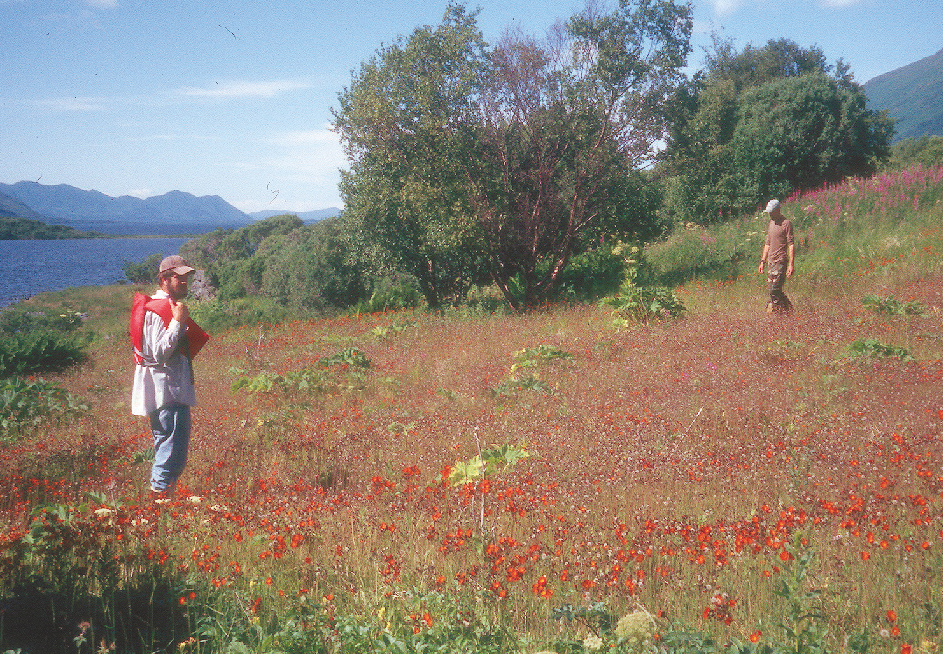
An infestation of orange hawkweed at Camp Island, Karluk Lake.
Background: Orange hawkweed (Hieracium aurantiacum) spreads rapidly, reproducing by seed as well as spreading with rhizomes and stolons. Once established, orange hawkweed is able to displace grass and forb species. Orange hawkweed is most often found in meadows, roadsides, forest edges, lawns and pastures. This invasive plant is a problem in natural areas, lawns and agricultural land because it will completely displace most other plants.
Control: It is best to begin control efforts for orange hawkweed as soon as it is found; do not delay. Orange hawkweed is challenging to control. If new infestations are allowed to become established, it can take years of effort to control them.
Orange hawkweed produces 50-600 seeds per plant that remain viable for about seven years. Mowing, weed whacking, pulling and digging do not work on orange hawkweed infestations. Any root or stolon fragments broken from pulling and digging will resprout, and the disturbance associated with manual control will stimulate additional growth. Infestations may be covered with a weed barrier fabric if the edges are monitored and any hawkweed seen growing along the edges is controlled. Systemic herbicides are the most effective control measure because they kill the roots.
Impacts of orange hawkweed:
- Spreads easily from place to place, invading natural areas in addition to disturbed sites
- Forms monocultures as it displaces beneficial plants
- Can significantly reduce forage production in hay fields and pastures
- Can take over lawns and flower gardens
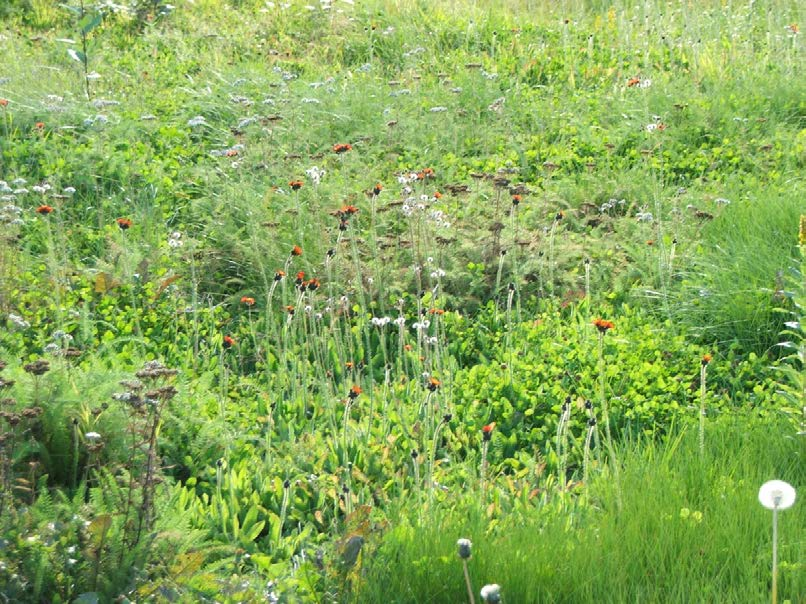
Identification:
- Reddish-orange flowers form at the end of a nearly leafless flower stalk.
- Leaves are basal rosettes.
- Hairs cover the plant.
- There are no native look-alike species.
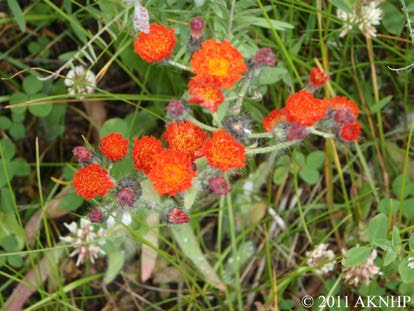
This printing was paid for by the Renewable Resources Extension Act (RREA).
Integrated Pest Management (IPM) Treatment Plan for Orange Hawkweed
The goal of IPM is to achieve long-term management with minimal impact on human health, the environment and non-target organisms. Below are some weed control methods and information on their effectiveness in controlling an infestation.
- Pulling or mowing is not recommended unless you are dealing with one or two plants and can dig out the entire area. Pulling or digging the plants leaves tiny root fragments and disturbs the soil, resulting in new hawkweed plants.
- Cover is recommended for small areas. Use a weed barrier fabric, leaving enough fabric to cover at least one foot beyond the edge of the infestation. Fabric must stay on for several years. Control hawkweed that sprouts at the edges.
- Herbicides with the following primary active ingredients are recommended for larger areas. For residential areas, use an herbicide that contains triclopyr, or 2,4-D and dicamba. Non-residential landscapes may be treated with an appropriately labeled herbicide containing clopyralid. In agricultural land, roadsides and natural areas, treat hawkweed with an herbicide that contains aminopyralid or clopyralid. Apply when plants begin active growth in the spring, before they flower. Add a surfactant to your herbicide because the plants hairs will prevent herbicide contact with leaves.
Timing Your Orange Hawkweed Control
Early-Summer Stage
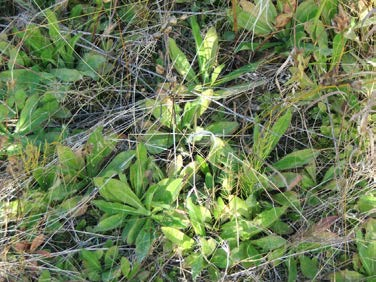
Pull/Mow/Dig — Do not do this unless you are dealing with one or two plants.
Cover — Apply weed barrier to entire infested area.
Herbicides — Effective now. Treat infested area as described above.
Bud-Flower Stage
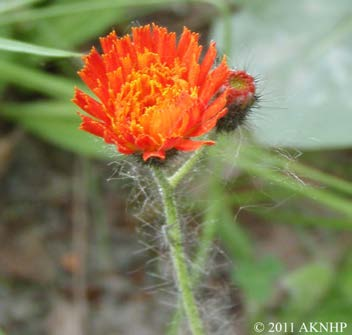
Pull/Mow/Dig — Do not do it unless you are dealing with one or two plants. Collecting flower heads can prevent seed dispersal to new areas.
Cover — Apply weed barrier to infested area. Apply herbicide to plants or expand weed barrier if growing beyond the barrier edges.
Herbicides — Aminopyralid is modestly effective; however, little kill may occur until the following season.
Flower-Seed Stage

Pull/Mow/Dig — Do not do it! You are more likely to spread than control it.
Cover — Continue monitoring and pulling edges.
Herbicides — No longer effective; consider covering.
Not sure you know how to apply herbicides safely and correctly? Contact your local Cooperative Extension Service office to learn more (www.uaf.edu/ces). Always read an herbicide label before applying to ensure it is registered for the site and you use it at the right rate.
Remember the LABEL IS THE LAW!
To simplify information, trade names of products have been used. No endorsement of named products by the University of Alaska Fairbanks Cooperative Extension Service is intended, nor is criticism implied of similar products that are not mentioned.
References
Alaska Exotic Plant Information Clearinghouse. 2005. Invasive Plants of Alaska. Alaska Association of Conservation Districts Publication. Anchorage, Alaska.
Seefeldt, S.S., and J. Conn. 2011. “Control of orange hawkweed (Hieracium aurantiacum) in Southern Alaska.” Invasive Plant Science and Management 4(1): 87-94.
Gino Graziano, Extension Invasive Plants Instructor
Reviewed August 2020
